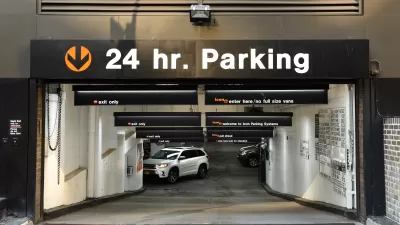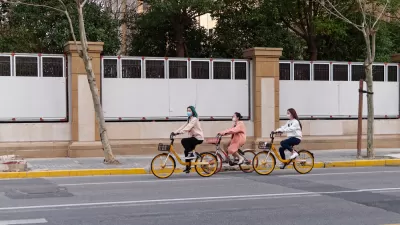Ryan Avent offers a counterpoint to a recent article critiquing the urban economic theories of Richard Florida, arguing that the movement of people and the "creative class" to cities based on employment is the heart of urban economics.
Avent counters a piece by Alec MacGinniss in The American Prospect that challenges the wisdom of Florida's assessment of the future of post-manufacturing American cities. Avent argues that Florida is correct in his assertion that creative people flock towards other creative people, and that some cities just don't have that pull.
"That tautology doesn't just lie at the heart of Florida's theory; it describes the actual functioning of urban economies. The value in economically dynamic cities is the people that populate them. Where once, firms would pay high land prices to be near coal deposits or harbors, based on the economic advantages those amenities conferred, they now pay high land prices to be near talent. This yen to concentrate in particular areas has a number of dynamics. Firms want to be near customers and clients. Workers want to be near firms. Firms want to be near workers. Where there are lots of firms and workers, there will also be businesses serving those workers - in business and in the provision of consumption opportunities - and those services attract additional firms and workers. Everyone wants to be where everyone is, and it's tough for anyone to go somewhere else because somewhere else is where people aren't.
The result is an urban geography that's very lumpy. People clump together, because there are gains to doing so.
But what makes a successful clump changes over time."
FULL STORY: Understanding the Rise and Fall of Urban Economies

Planetizen Federal Action Tracker
A weekly monitor of how Trump’s orders and actions are impacting planners and planning in America.

Maui's Vacation Rental Debate Turns Ugly
Verbal attacks, misinformation campaigns and fistfights plague a high-stakes debate to convert thousands of vacation rentals into long-term housing.

San Francisco Suspends Traffic Calming Amidst Record Deaths
Citing “a challenging fiscal landscape,” the city will cease the program on the heels of 42 traffic deaths, including 24 pedestrians.

Defunct Pittsburgh Power Plant to Become Residential Tower
A decommissioned steam heat plant will be redeveloped into almost 100 affordable housing units.

Trump Prompts Restructuring of Transportation Research Board in “Unprecedented Overreach”
The TRB has eliminated more than half of its committees including those focused on climate, equity, and cities.

Amtrak Rolls Out New Orleans to Alabama “Mardi Gras” Train
The new service will operate morning and evening departures between Mobile and New Orleans.
Urban Design for Planners 1: Software Tools
This six-course series explores essential urban design concepts using open source software and equips planners with the tools they need to participate fully in the urban design process.
Planning for Universal Design
Learn the tools for implementing Universal Design in planning regulations.
Heyer Gruel & Associates PA
JM Goldson LLC
Custer County Colorado
City of Camden Redevelopment Agency
City of Astoria
Transportation Research & Education Center (TREC) at Portland State University
Jefferson Parish Government
Camden Redevelopment Agency
City of Claremont





























